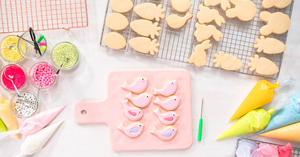Fashion is a powerful form of self-expression, and even from a young age, children use clothing to reflect their personalities and interests. Helping kids develop their own unique style not only encourages creativity but also boosts their confidence as they learn to make decisions about how they present themselves to the world.
Guiding children to express their individuality through fashion is about more than just picking out clothes—it’s about teaching them how to make thoughtful choices, experiment with color and pattern combinations, and develop a sense of pride in their personal style. This process helps children understand that fashion can be fun, flexible, and a reflection of who they are, while also teaching them basic concepts of matching, coordination, and self-confidence. In this article, we’ll explore how parents can encourage kids to embrace their unique personalities through fashion while also learning essential fashion fundamentals.
The Importance of Personal Style in Childhood
Developing a personal style in childhood helps kids explore their individuality and build confidence. By giving children the freedom to experiment with fashion, parents empower them to express who they are in a way that feels authentic. This process also allows children to engage with the world of fashion creatively, trying out new looks and experimenting with combinations that reflect their preferences and interests.
- Building Confidence: When children are allowed to make decisions about what they wear, they gain a sense of independence and ownership over their appearance. This boosts their confidence and teaches them that their choices matter, fostering a healthy sense of self-esteem.
- Creative Expression: Fashion allows children to experiment with different colors, patterns, and styles. This creative process is an important part of their overall development, as it encourages them to think independently, be imaginative, and feel comfortable making choices that reflect their individuality.
- Learning Practical Skills: Developing a personal style helps children learn practical skills like coordinating outfits, matching colors, and understanding which fabrics are appropriate for different settings. These skills contribute to their ability to make thoughtful decisions in other areas of life as well.
Encouraging Kids to Explore Their Unique Style
Helping children discover and embrace their personal style involves offering them both freedom and guidance. Here are a few ways parents can encourage their kids to develop their own fashion sense:
- Give Them Choices: Offer your child several options when it comes to clothing. Letting them choose their own outfits—even if they mix and match in unexpected ways—gives them the freedom to explore what they like. If you’re concerned about an outfit being inappropriate for the weather or occasion, gently steer them towards a suitable choice while still allowing room for self-expression.
- Encourage Experimentation: Allow children to play with different colors, patterns, and accessories. They might want to pair stripes with polka dots or wear their favorite superhero cape over a dress. Encouraging experimentation helps them understand that fashion is fun and flexible, and there are no hard-and-fast rules when it comes to personal style.
- Respect Their Preferences: Every child has their own unique tastes. If your child prefers certain colors, themes, or styles, try to respect their preferences, even if they don’t align with your own fashion sense. This shows them that their choices are valid and helps build their confidence in making decisions.
- Lead by Example: Share your own love of fashion with your child. Show them how you make decisions about your own outfits and explain why you choose certain pieces. By modeling how to combine colors, textures, and accessories, you help children learn the basics of fashion while still encouraging them to develop their own preferences.
Teaching Fashion Basics: Colors, Patterns, and Accessories
While it’s important to encourage creativity and self-expression, teaching kids a few basic fashion principles can help them make more informed decisions about their outfits. Here are a few key concepts to introduce:
- Matching Colors: Explain the basics of color coordination. For instance, teach them how neutral colors like black, white, and grey can pair well with almost anything, while bolder colors like red or blue can be matched with complementary shades. You can make this a fun lesson by exploring the color wheel together and practicing with their clothes.
- Mixing Patterns: Teach kids how to mix patterns in a way that feels cohesive rather than chaotic. Start by explaining that it’s often easier to pair one bold pattern with a simpler one (such as stripes with solid colors). As they get more comfortable, they can experiment with combining patterns of different sizes or themes to create unique looks.
- Using Accessories: Accessories like hats, scarves, or jewelry offer a great way for kids to add personality to their outfits. Show them how a simple accessory can transform an outfit or how adding a favorite piece—like a bright-colored scarf or a fun hat—can make their look stand out.
By learning these fashion fundamentals, kids develop the tools to confidently express their individuality while understanding how to make thoughtful, stylish choices.
Balancing Self-Expression with Practicality
While personal expression is essential, children also need to learn when and how to balance their style with practicality. For example, it’s important for them to understand that wearing flip-flops might be great for the beach, but not for a day at school, or that a favorite superhero costume might be fun at home, but isn’t appropriate for a formal event.
Parents can guide children through these lessons by explaining the practical considerations of dressing for the right occasion, like weather-appropriate clothing or functional outfits for different activities. While this might involve compromising on their initial fashion choices, helping kids strike a balance between self-expression and practicality ensures that they are both comfortable and appropriately dressed for different situations.
When done with care and encouragement, these moments become learning opportunities where children see that their fashion choices can still reflect their personality, even when adapting to the expectations of the setting.
Conclusion
Helping kids express their personalities through fashion is a valuable way to build their confidence, foster creativity, and encourage individuality. By giving them the freedom to explore different styles, teaching them the basics of color coordination and pattern mixing, and offering gentle guidance on practicality, parents can support their children in developing a personal sense of style that reflects who they are.
Fashion becomes a fun, empowering tool for self-expression, and kids who learn to dress in a way that feels authentic are more likely to feel confident and comfortable in other aspects of their lives. Encouraging personal style not only boosts creativity but also helps children feel proud of their uniqueness as they navigate both the fashion world and their personal identity.








Be the first one to comment on this story.